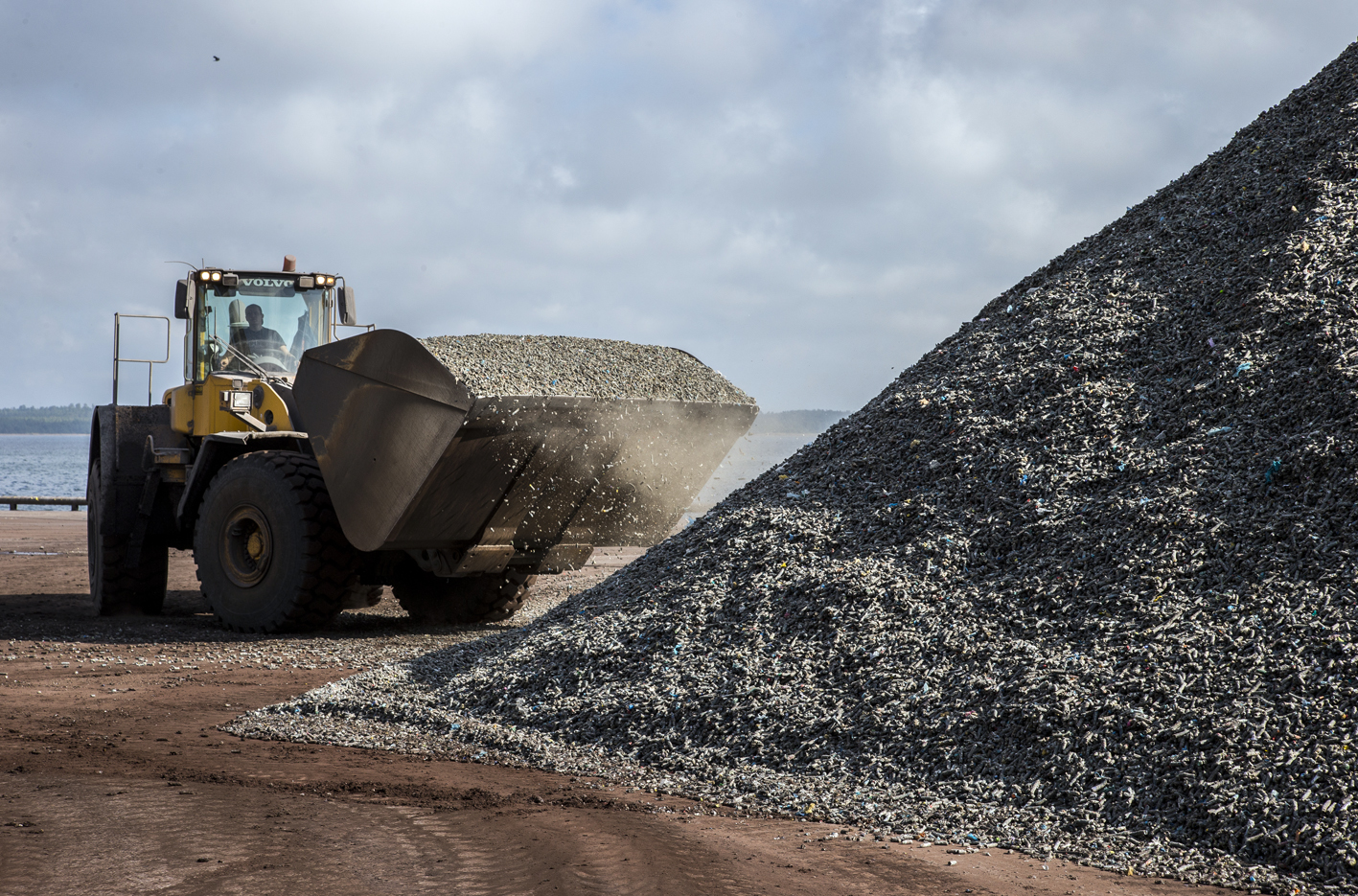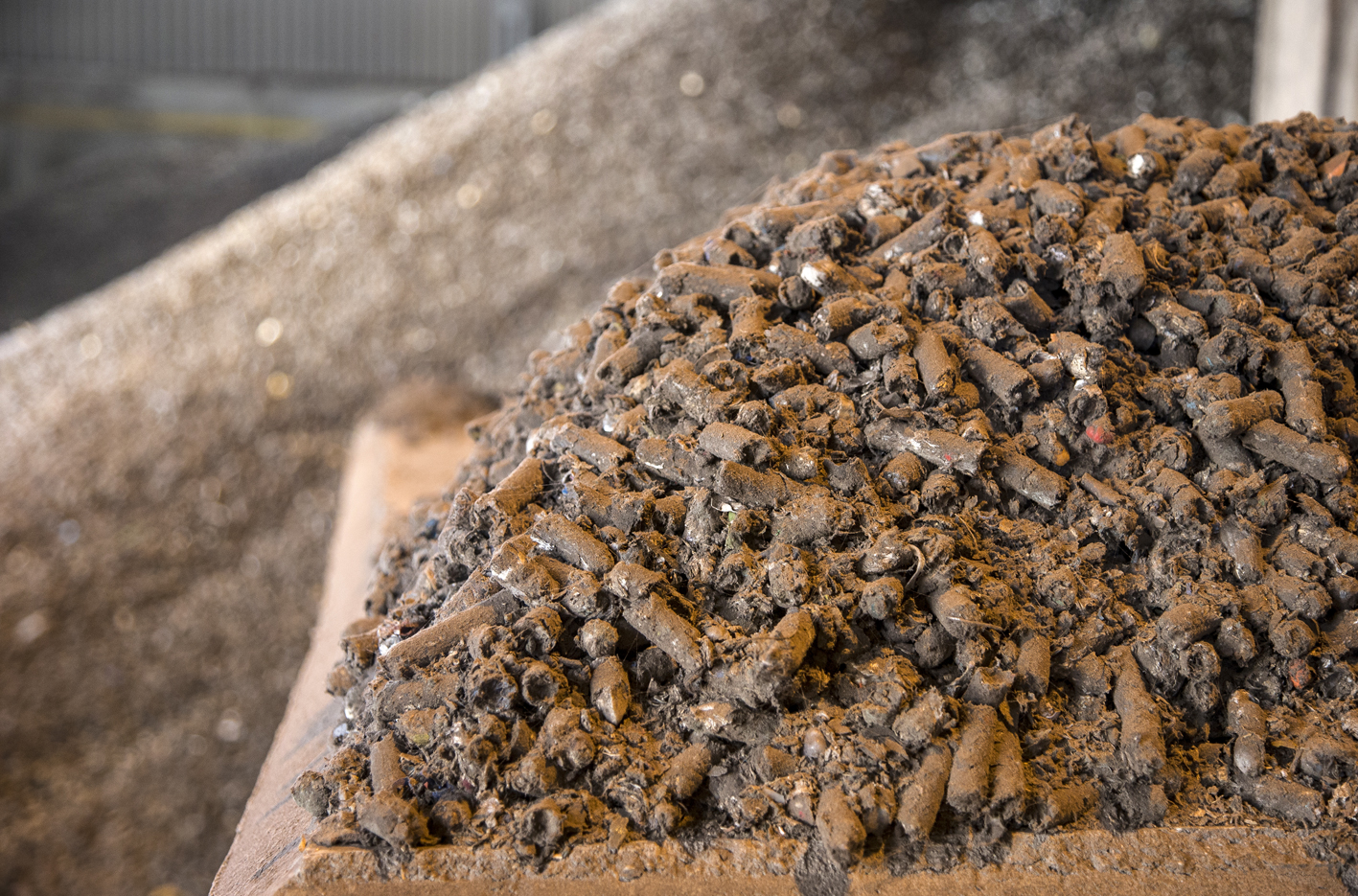Pellets
According to the Swedish Academy’s own dictionary, a pellet is a “small ball of, for example, ore, concentrate, fuel”. In our case, the pellet is a cylinder which is 40-90 mm long, with a diameter of 16-18 mm. It comprises quality-assured, sorted and treated waste, normally 1/3 wood, 1/3 cardboard and 1/3 plastic.
The pellets are produced by specialist waste companies in a sophisticated process, whereby the waste is carefully sorted before being ground down in two or three stages. The finely-ground material is then forced at high pressure through a matrix, producing waste pellets that have outstanding properties as a fuel.
High-quality pellets have many logistical advantages. They can be handled, loaded and unloaded, and stored without dust or odour. Loading and unloading of ships is fast and efficient. When the material reaches the cement factory, it is transported into the kiln via separate and specially-designed handling systems. One element of the handling system is a crusher, where the pellets are crushed into a white powder that is an excellent fuel for the main burner of the cement kiln.
The biggest advantages of using pellets as a fuel are their high and consistent quality, good handling properties, and the fact that approximately two-thirds of each pellet is a biofuel.


